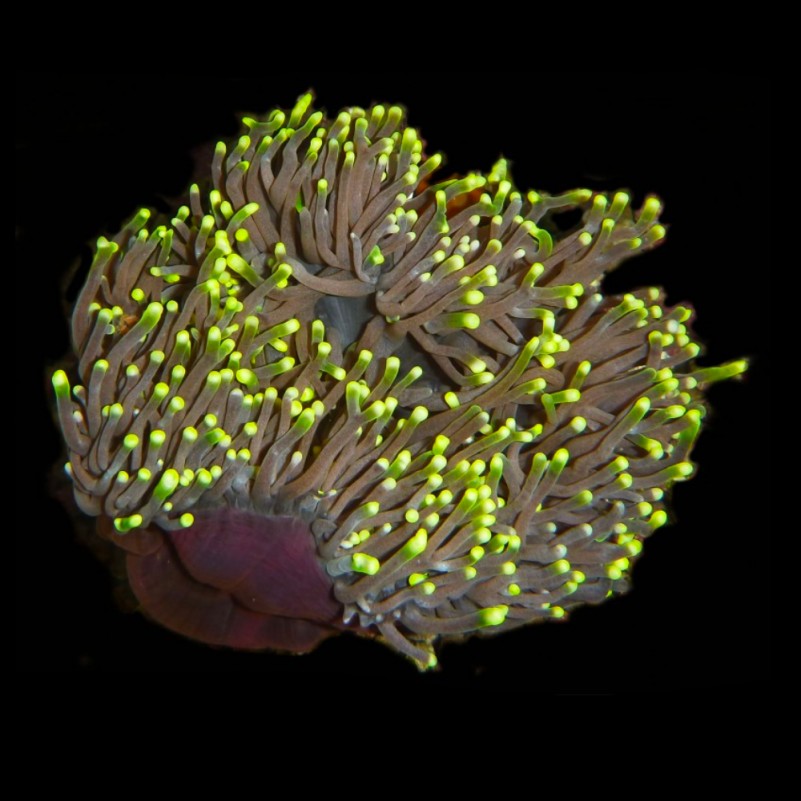Heteractis Magnifica sp.- Magnificent Anemone L-size
Heteractis magnifica, commonly known as the magnificent sea anemone or ritteri anemone, is a striking and well-known species in the family Stichodactylidae. It is a popular host anemone for several species of clownfish. Below is a detailed overview:
Description
-
Appearance:
- It is one of the most visually striking sea anemones, known for its vivid colors, which can include shades of purple, blue, green, yellow, orange, or brown.
- Its tentacles are relatively long, smooth, and can be slightly tapering. The oral disk, which can reach over 1 meter in diameter, is often brightly colored and contrasts with the tentacles.
- The base (column) is usually pale and may appear slightly adhesive.
-
Size:
- Can grow to be very large, with its oral disk spanning up to 1 meter in favorable conditions.
Habitat
- Location:
Found throughout the Indo-Pacific, from the Red Sea to the central Pacific.
- Environment:
- Prefers shallow, well-lit waters and thrives on coral reefs or rocky substrates.
- Typically found in areas with strong water flow and intense sunlight, often perched on elevated structures for maximum exposure.
Behavior and Ecology
- Symbiosis:
- It has a mutualistic relationship with photosynthetic zooxanthellae, which reside in its tissues and provide nutrients.
- Acts as a host to several species of clownfish (e.g., Amphiprion percula, A. ocellaris, A. clarkii), as well as some species of shrimp, providing them with protection from predators using its stinging tentacles.
- Feeding:
- Captures small fish, crustaceans, and plankton using its tentacles, which contain nematocysts (stinging cells).
Reproduction
- Asexual: Rare, but can occur through longitudinal fission (splitting).
- Sexual:
- Reproduces by releasing eggs and sperm into the water column.
- Fertilized eggs develop into free-swimming planula larvae before settling onto a substrate to grow into a juvenile anemone.
Aquarium Care
- Lighting: Requires high-intensity lighting to support the zooxanthellae within its tissues.
- Water Flow: Needs strong, consistent water flow to mimic its natural reef environment.
- Temperature: Prefers stable tropical temperatures between 24-27°C (75-81°F).
- Care Level: Challenging to maintain in captivity due to its size, light requirements, and sensitivity to water quality. It is best suited for advanced aquarists.







